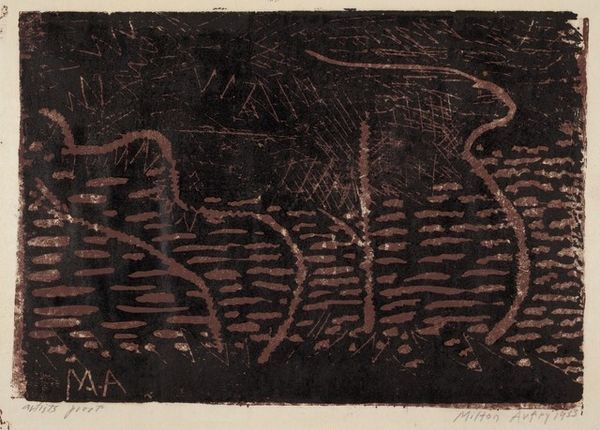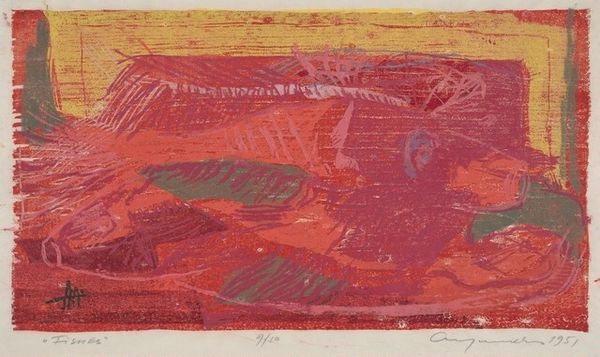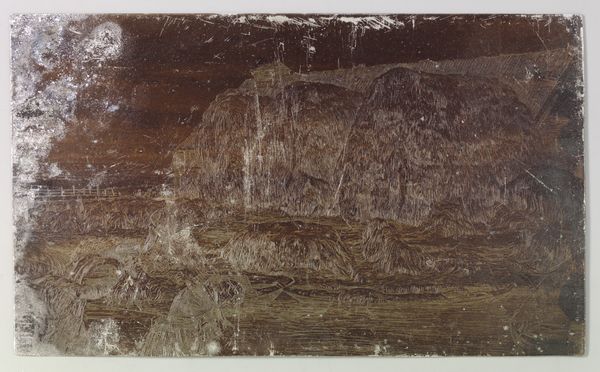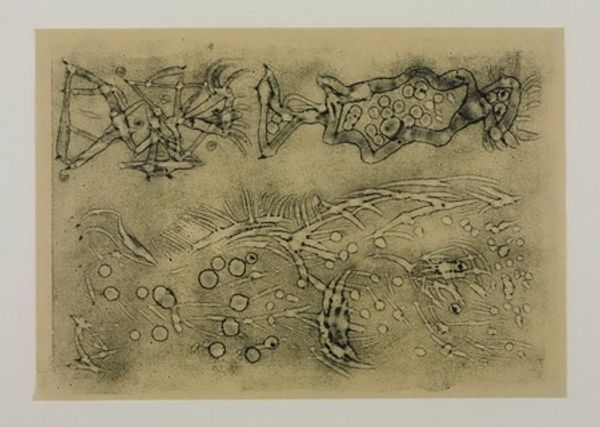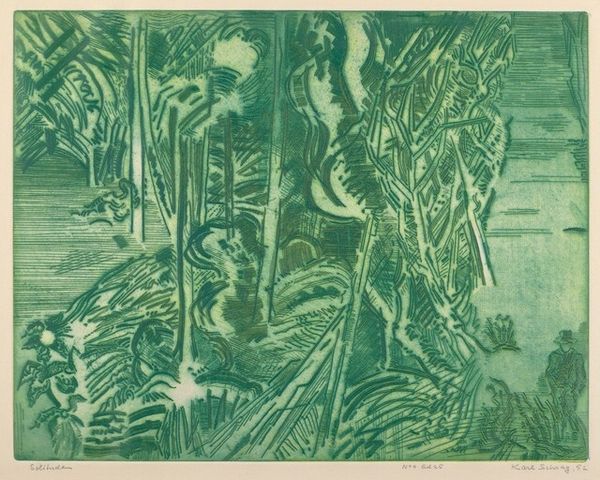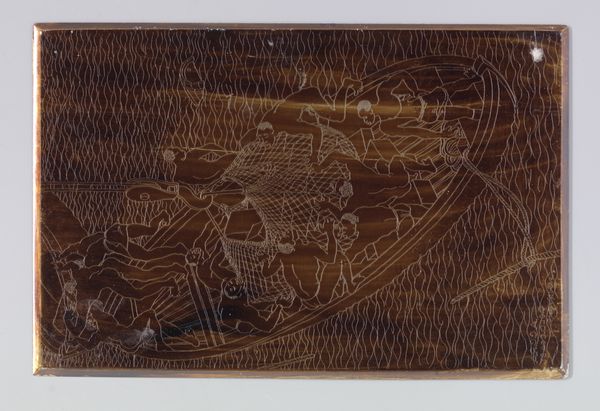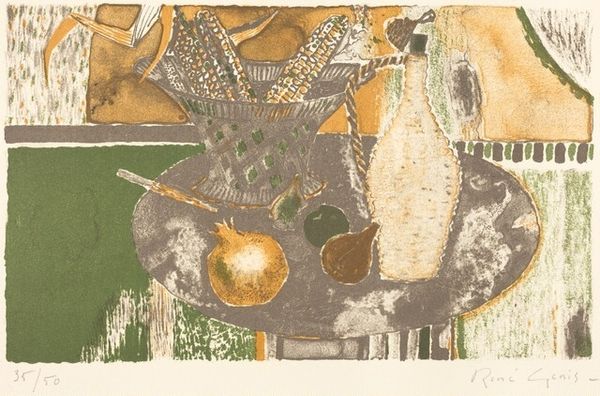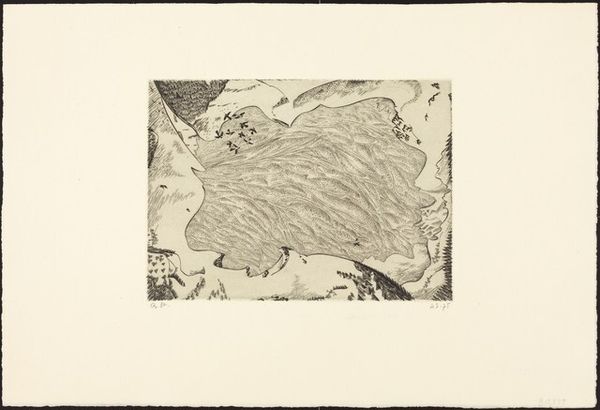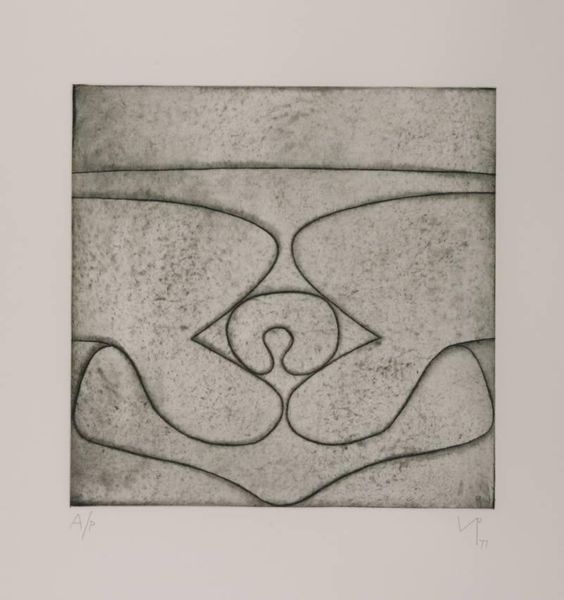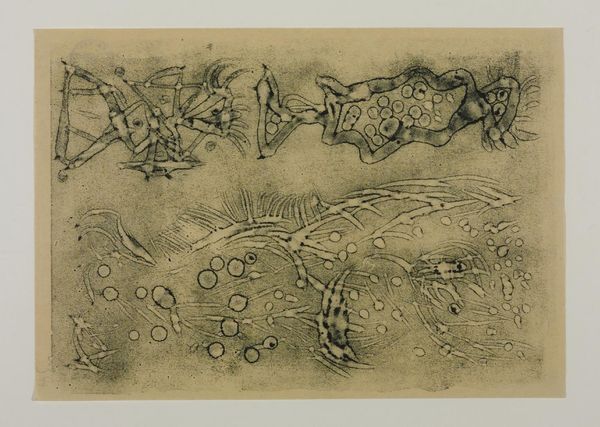
mixed-media, print, monoprint
#
abstract-expressionism
#
mixed-media
# print
#
monoprint
#
geometric
Copyright: National Gallery of Art: CC0 1.0
Curator: This is "Image," a mixed-media monoprint created in 1954 by Elaine Rubeck. It's a striking example of abstract expressionism. Editor: My first impression is one of subdued introspection. The earthy palette creates a hushed, almost archaeological atmosphere. It's as though we're unearthing something ancient and fragmented. Curator: Indeed. The restricted palette emphasizes the formal elements. Note the interplay of geometric shapes. The artist orchestrates these shapes, deploying layered and ambiguous figure-ground relationships, resisting any easy reading. The texture too, created through the printmaking process, invites close looking. Editor: And those geometric forms seem almost totemic, don't they? Given the time period, and Rubeck's association with the abstract expressionist movement, one can't help but read into this a subconscious dialogue regarding social upheaval, perhaps an examination of societal structure reflected in its abstraction of imagery and a turn to geometric forms. Curator: Possibly. The formal tension created through the juxtaposition of hard edges and blurred textures can evoke a sense of unease. Also, consider its status as a monoprint: a singular image. Rubeck chose this technique, imbuing it with a sense of unique authority, while contributing to a larger social turn toward individual subjective experience. Editor: Interesting. I hadn’t considered how that one-off process also fits into the broader narrative of post-war anxiety and the singular experience, reflected in both abstraction and the unique objecthood of the monoprint. Perhaps the ambiguity stems less from formal intention and more from the era's uncertainties. Curator: Both, perhaps. It’s precisely that interplay that sustains continued fascination, inviting us to reevaluate historical context alongside the artwork’s inherent formalism. Editor: Absolutely. Looking at this image through the lens of historical movements is illuminating while being able to assess her technique adds additional elements. I notice that Rubeck carefully manipulated tone and contrast, creating what feels almost like a memory image. Curator: Yes, precisely. A memory distilled into form, surface, and tone. Editor: Ultimately, the layers of visual and contextual analysis converge to reveal this remarkable piece’s potency, prompting deeper thinking of its creation and social factors during its period. Curator: Agreed. An engagement with “Image” gives the audience a valuable insight, with many social issues and movements it offers its viewer a compelling statement.
Comments
No comments
Be the first to comment and join the conversation on the ultimate creative platform.
